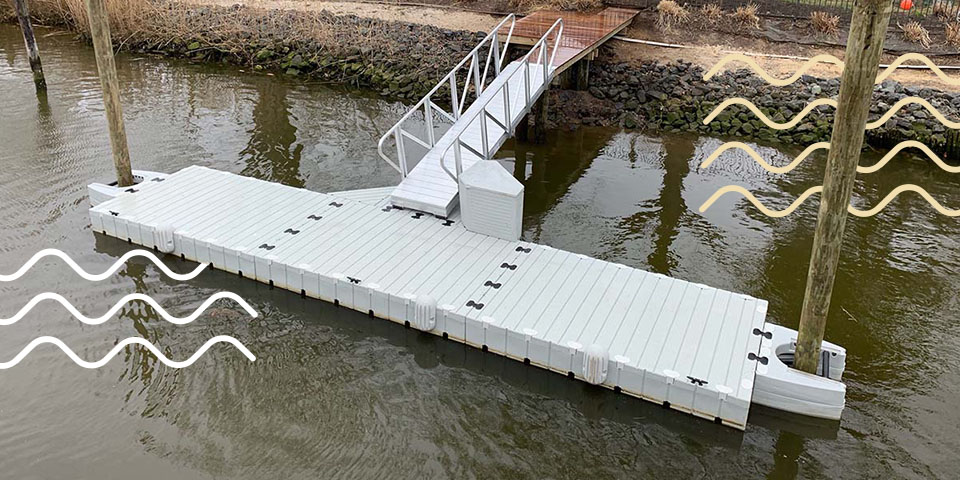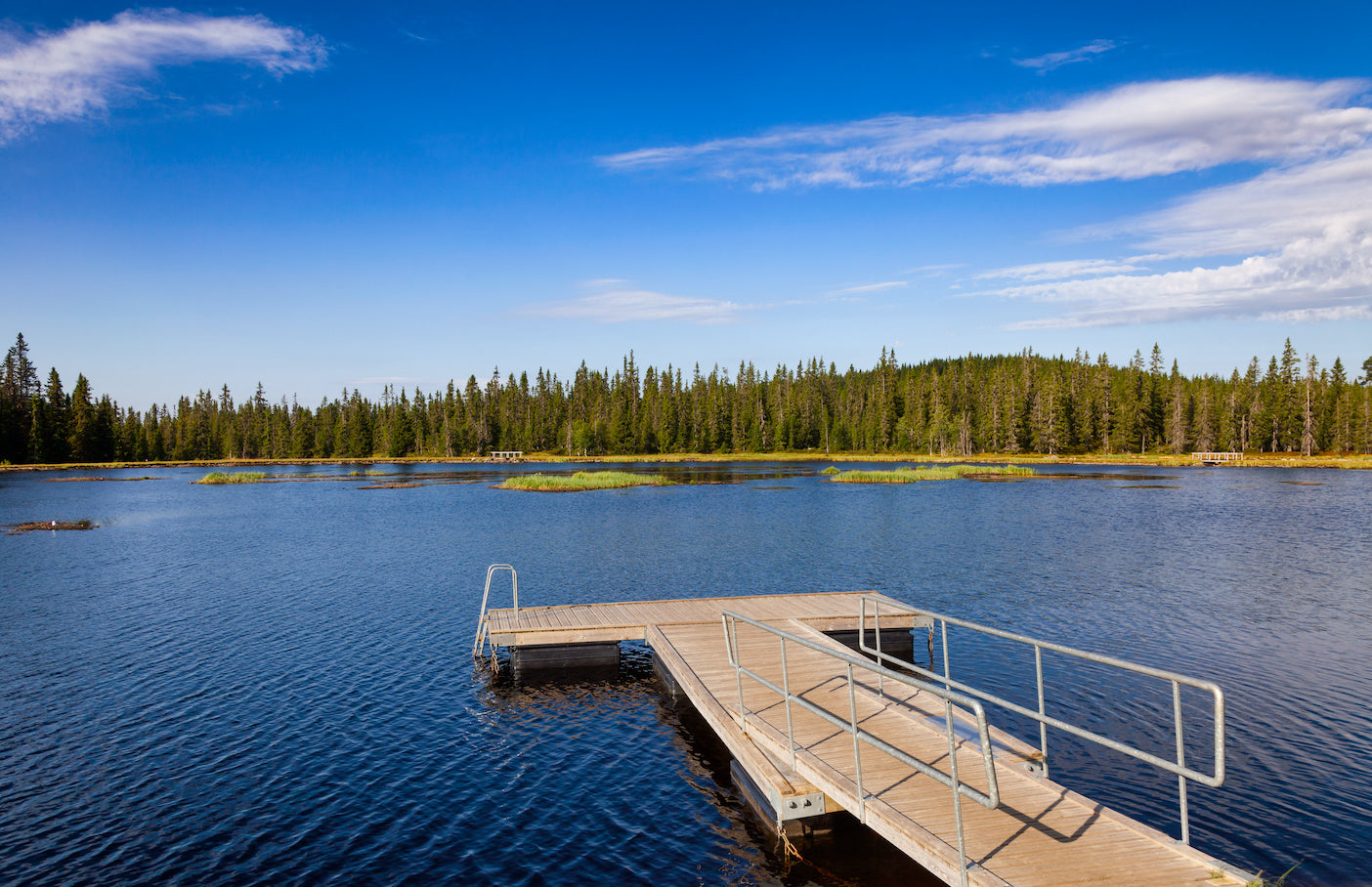Your Overview to Finding the Best Dock Company for High Quality and Integrity
Your Overview to Finding the Best Dock Company for High Quality and Integrity
Blog Article
Create the Perfect Docking Remedy With Floating Docks
Floating docks present a flexible option for a variety of maritime needs, adjusting perfectly to changing water levels and diverse vessel kinds. Their modular nature permits quick installation and relocation, yet the option of appropriate products and style functions is important for ensuring both performance and aesthetic charm. As we explore the important aspects that contribute to the efficiency of floating docks, several essential factors pertaining to stability and upkeep will emerge, raising questions regarding exactly how to enhance your docking experience. The subsequent discussion will certainly illuminate these vital considerations.

Benefits of Floating Docks
Floating docks offer numerous advantages that make them an optimal choice for different maritime applications. One of the primary advantages is their versatility to transforming water degrees. Unlike dealt with docks, floating docks increase and loss with the tide, guaranteeing regular access for vessels. This function is specifically crucial in locations susceptible to substantial tidal variations or seasonal water level modifications.
Furthermore, floating docks are typically simpler and quicker to install compared to standard set frameworks. Their modular style enables for simple assembly and disassembly, facilitating maintenance and relocation when needed. This flexibility is specifically beneficial for momentary applications or in settings where problems might change.
Floating docks also have a tendency to be more eco-friendly, as they minimize disturbance to the seabed and bordering aquatic communities. Their resilient nature minimizes the threat of damages to marine life, promoting a healthier atmosphere. Furthermore, these docks can be personalized to accommodate various vessel dimensions, making certain that they fulfill certain functional needs - floating dock builder.
Inevitably, the mix of flexibility, simplicity of setup, and ecological considerations makes floating docks a highly efficient solution for a wide variety of maritime requirements.
Picking the Right Materials
Choosing the appropriate products for floating docks is critical to make sure security, durability, and resilience. The selection of products directly impacts the dock's performance in various environmental problems, including exposure to water, sunlight, and potential wear from marine web traffic.
Usual materials used for floating docks consist of aluminum, wood, and high-density polyethylene (HDPE) Aluminum is lightweight, corrosion-resistant, and calls for marginal maintenance, making it an outstanding selection for long life. Nonetheless, its initial expense can be higher contrasted to various other products.
Wood, while cosmetically attractive and supplying a typical look, can be prone to rot and pest damage if not correctly dealt with. As a result, making use of pressure-treated wood or naturally sturdy types like cedar or redwood can reduce these problems.
HDPE is a prominent selection because of its resistance to UV rays and chemicals, along with being eco-friendly. floating dock services. It is light-weight and available in various shades, permitting personalization
Inevitably, the right product choice will depend on details requirements, consisting of spending plan, desired appearances, and ecological considerations. Careful evaluation of these aspects will certainly lead to a resilient and effective floating dock option.
Design Factors To Consider for Security
When making floating docks, ensuring stability is an essential facet that can significantly affect their functionality and security. Security in floating dock design is influenced by various factors, consisting of buoyancy, weight circulation, and the setup of parts.
Weight distribution is crucial; equally distributing lots across the dock protects against tilting and improves stability. This can be attained with tactical positioning of docking equipment, such as cleats and fenders, along with proper spacing of drifts. Furthermore, the dimensions of the dock should be thoughtfully planned. Larger styles can offer enhanced security, specifically in rough water conditions, while longer docks might need additional supports to avoid drooping.
An additional vital consideration is the ecological effect, including wave activity and wind. Incorporating features such as sidewalls or skirting can help alleviate the effects of environmental forces, preserving stability in damaging problems. Ultimately, a mix of thoughtful style, product option, pop over to this web-site and understanding of ecological variables will certainly yield a drifting dock that satisfies both stability and safety requirements.
Installation Tips and Strategies

Next, secure the essential licenses and adhere to regional laws, which may dictate installment approaches and environmental considerations. Engage a qualified service provider experienced in floating dock installations if required. Use high-quality products made for aquatic atmospheres to enhance resilience and durability.
When positioning the dock, straighten it alongside the coastline to assist in very easy access. Make sure that the anchoring system is durable, utilizing cinder block or helical supports to maintain the dock against wind and wave action. It's important to account for seasonal water degree changes, including potential ice movement in cooler environments.
During the installment, verify the dock's floatation and security prior to settling the anchoring. Frequently inspect the installment for any type of signs of wear or damages. By complying with these strategies and suggestions, you can achieve a protected, useful, and aesthetically pleasing floating dock installment that satisfies your needs.
Maintenance and Treatment Guidelines
Caring and preserving for floating docks is important to prolonging their lifespan and making certain safe usage. Regular examinations need to be conducted to identify any type of indicators of wear, his comment is here damages, or aquatic development. Seek cracks, loose installations, or blemished locations on the dock's surface area, as these problems can endanger architectural honesty.
Cleaning is vital. Use a stress washing machine to get rid of algae, barnacles, and particles, which can build up in time. For stubborn development, think about eco-friendly cleaner that won't harm water life.
In addition, check the mooring lines and anchors frequently to ensure they are cost-free and safe from corrosion. Replace any kind of torn or harmed lines without delay to maintain stability.
During extreme climate, such as storms or freezing conditions, take preventive steps. Protect the dock with additional mooring lines and, if viable, remove any type of removable components to stop damages.
Conclusion
Finally, the application of floating docks offers a effective and flexible docking option suitable for various maritime applications. Their adaptability to changing water levels, incorporated with a modular design, enables very easy customization and relocation. Choosing proper products boosts both longevity and aesthetic appeal, while careful consideration of security makes certain security and long life. With proper installment and regular upkeep, floating docks can supply reliable and trustworthy docking experiences for a vast array of vessels.
As we discover the vital elements that contribute to the effectiveness of floating docks, numerous crucial aspects pertaining to security and read the full info here maintenance will emerge, raising questions regarding exactly how to enhance your docking experience. Unlike fixed docks, floating docks increase and fall with the tide, ensuring consistent accessibility for vessels.When making floating docks, making certain stability is an essential element that can significantly affect their functionality and security. Stability in floating dock layout is affected by various variables, consisting of buoyancy, weight circulation, and the arrangement of elements. Inevitably, a combination of thoughtful style, material selection, and understanding of ecological aspects will generate a drifting dock that fulfills both security and security requirements.
Report this page